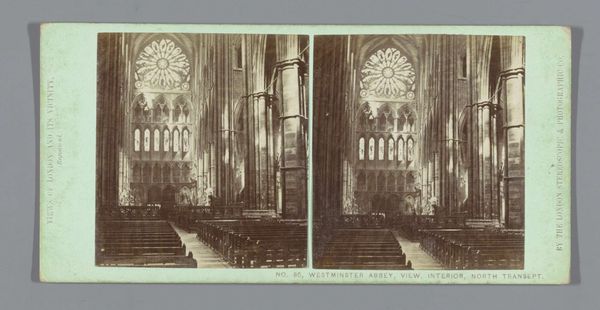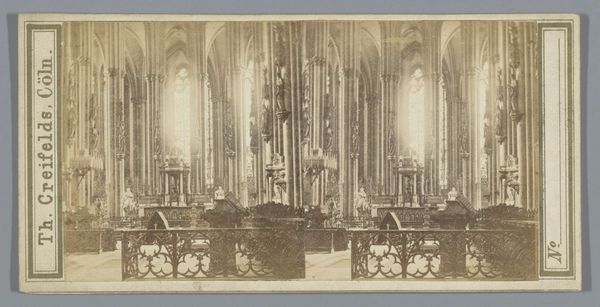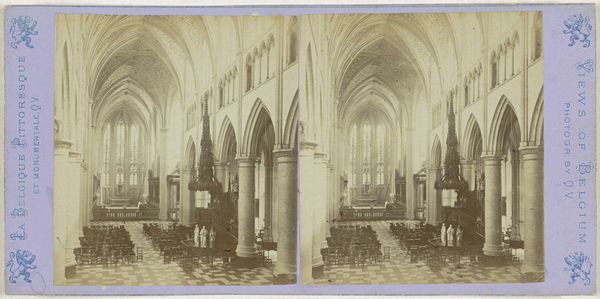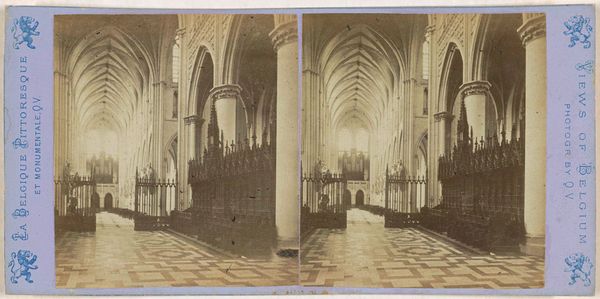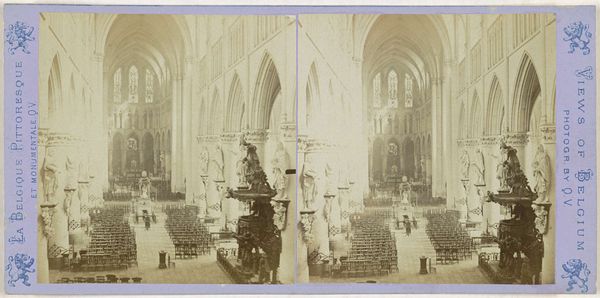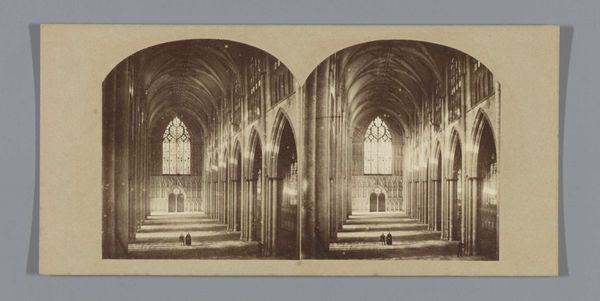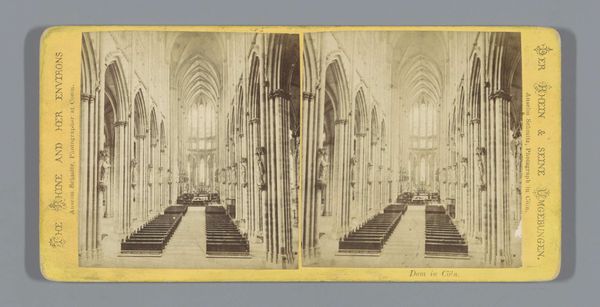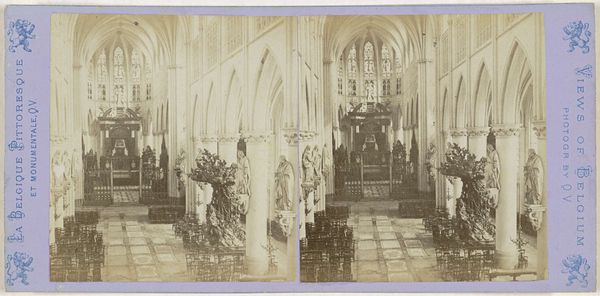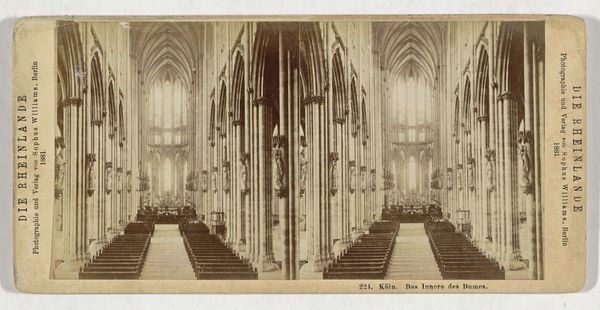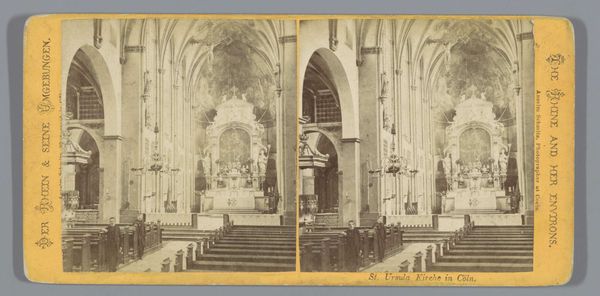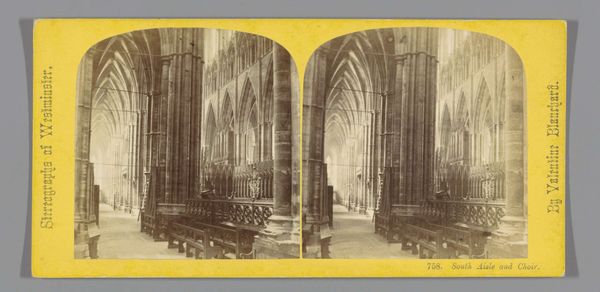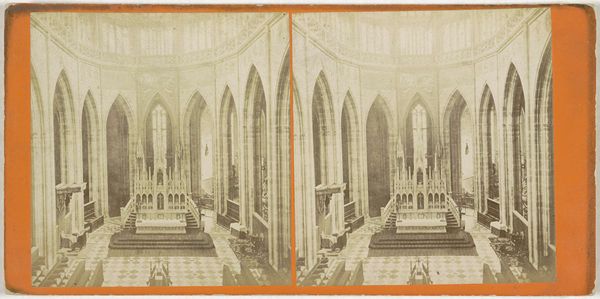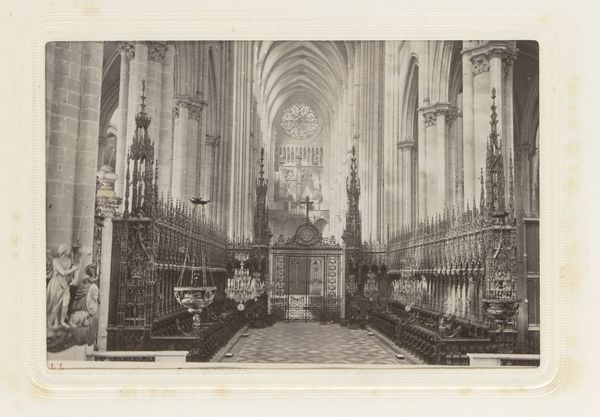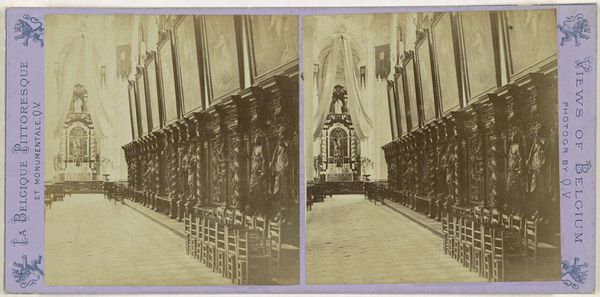
Interieur van de Onze-Lieve-Vrouwekathedraal in Antwerpen 1866 - 1870
0:00
0:00
print, photography, gelatin-silver-print
# print
#
landscape
#
photography
#
geometric
#
ancient-mediterranean
#
gelatin-silver-print
Dimensions: height 85 mm, width 175 mm
Copyright: Rijks Museum: Open Domain
Editor: This is a photograph entitled "Interior of the Cathedral of Our Lady in Antwerp" created between 1866 and 1870 by Jules Hippolyte Quéval. It's a gelatin-silver print that showcases the interior of the cathedral. The mood is austere, yet also majestic. I'm particularly drawn to the contrast between the ornate woodwork of the choir stalls and the seemingly infinite height of the cathedral. What historical forces shaped a photograph like this one? Curator: This photograph offers a fascinating glimpse into the public role of art and imagery in the 19th century. Think about the context in which this was created: photography was relatively new. What do you imagine was the impact of distributing photographic prints of such culturally significant buildings? Editor: I imagine it made these spaces accessible to a broader audience who may never get to visit them in person. Almost like a very early form of mass media bringing art and architecture to the public. Curator: Precisely. Photography democratized access to these grand, traditionally elite spaces. Consider also how the architectural revival movements shaped preferences. Neo-Gothic style, for example, was tied up with national identity. Would the Cathedral shown in the picture carry a meaning beyond its religious function? Editor: Yes, I see how promoting the architecture served as a projection of national pride and power through the printing press, then by photography as a cutting-edge visual medium. Curator: Indeed. So this print functions as both a document and a piece of propaganda, highlighting the architectural heritage and solidifying cultural narratives through accessible visual media. Does thinking about its wider distribution impact your perception of the photo? Editor: Definitely. Seeing it as part of a broader social and political movement adds another layer of meaning, making it much more than just an aesthetically pleasing photograph. Curator: Exactly, and appreciating the history illuminates how public art has long intertwined with social power. Editor: Thank you. I'll definitely look at images with those dynamics in mind moving forward.
Comments
No comments
Be the first to comment and join the conversation on the ultimate creative platform.
